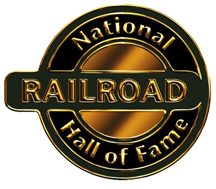
GALESBURG, Ill. – The National Railroad Hall of Fame project has been awarded a $478,414 state tourism grant toward construction of a building in Galesburg. Plans call for construction of a new building next to the Amtrak station that would celebrate railroading history and bring in tourism dollars, Tri States Public Radio reported. The proposal to build the National Railroad Hall of Fame in Galesburg was first announced in 2006.
“We’re just very grateful to the state of Illinois for these funds as well as to the city and county for the confidence that they’ve shown in the project,” Julie King, executive director of the National Railroad Hall of Fame told Tri States. King said that with the state grant, a $1 million pledge from the city of Galesburg, $250,000 from Knox County and other donations, nearly $5.6 million has now been raised. Now a national capital campaign is being reactivated.
“We’ll be seeking the balance of the funding from private sector donors both nationally and ultimately here in our community,” King said. “Our goal for that portion of the campaign is $4 million.” That should cover the cost of inflation on the project as well as contingencies and an endowment. Once the funds are in place, it’s expected construction would take 18 months.
The organization has been inducting members since 2002. Among the inductees from the modern era are W. Graham Claytor, former President of Amtrak and Southern Railway, Louis W. Menk of Burlington Northern, Mike Haverty of Kansas City Southern and Santa Fe, and A. Phillip Randolph of the Brotherhood of Sleeping Car Porters.
Congress passed resolutions officially designating Galesburg as the site in 2003 and 2004. More information can be found at www.nrrhof.org.














If Grenville Dodge and Theodore Judah are not nominated or already in the Hall of Fame – there is no justice at all.
I would like to nominate:
George Mortimore Pullman
I would like to nominate the 12,000 plus workers imported from China to work the Central Pacific. You can still find Chinese artifacts left behind along the route to Promentory.
Some went back home to China, many stayed. Many brought their families with them while working the route. It would be a compelling addition.
And if you want to look in awe and wonder – look at Bloomer Cut. The Chinese workers used black power, picks, shovels and carts to create that cut. Also, look at Summit Tunnel – they did the same there (although later in the process they use nitroglycerine instead of black powder).
John Shedd Reed
I would like to nominate Kate Shelley.